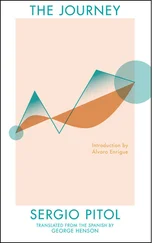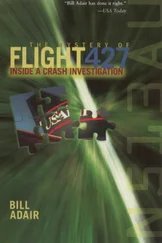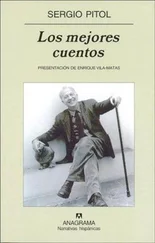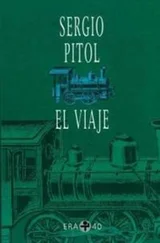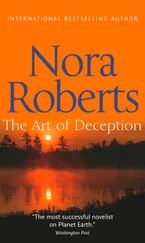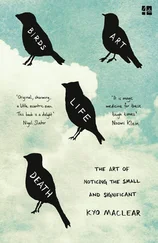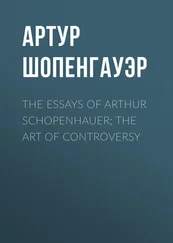This is too much, I know. However, Vasconcelos never uttered these outrages during the time in which he situates his autobiographical novel. His work offers us the greatest proof. In 1920, in Hindustani Studies , he states categorically that only mestizo races were capable of great creations; in 1925, in The Cosmic Race , he glimpsed the future of humanity in the emergence of mestizaje that was shaping Latin America. This region of the world was the custodian of a new spiritual energy, which renewed ancient myths and recreated the Dionysian spirit. In 1926, in Indology , he makes a confession that refutes the racial resentment that, little by little, grew increasingly more virulent. “Unfortunately,” he said, “I have no black blood, but I possesses a small portion of indigenous blood, and it is to it that I believe I owe a greater sensitivity than that of the majority of whites; I have the seed of a culture that was already brilliant when Europe was still barbaric.”
Creole Ulysses is also the record of an initiation into the world of culture, of the handling of ideas, of a spiritual journey, in short, of a path to the stars. If on other subjects his pronouncements were at times retroactive and he made them appear valid at a time when they were not, there was one on which his thought was always consistent: his contempt for what he considered unnecessary stylistic frills. He explains at the beginning of Ulysses that after learning to read, the only thing that interested him was content, not form. This statement will become an irrefutable principle, strengthened by the certainty that his fate would infallibly lead him to glory. “At ten years old, I felt alone and unique and called to lead…A certain disposition of my temperament and the habit of translating since childhood has left me with this indifference and lack of talent for form.”
Regarding his membership in the group of intellectuals who formed the Youth Athenaeum (Antonio Caso, Alfonso Reyes, Luis Martín Guzmán, Pedro Henríquez Ureña, and Julio Torri, among others), he has serious reservations: “For my part I never valued knowledge for knowledge’s sake. On the contrary: knowledge as a means to reach the supreme essence; morality as a ladder for glory, without empty stoicism, such were my standards, and they were firmly directed toward the conquest of happiness. There was no cult of worship for that which is half or in-between; all my vehemence was directed toward the conquest of what is essential and absolute […] My colleagues read, cited, compared for the mere love of knowing, I selfishly peered into all knowledge, all information, material useful for organizing a theory of being in its entirety. Using a botanical term much in vogue in our country, I took for criticism only what it could contribute to the eclosion of my personality. I myself was the sprout immersed in the elements and eager to flower.” A credo that is equivalent to carrying with arrogant pleasure a heavy stone tied around one’s neck. The limitations of some philosophical texts come from this permanent blindness in which he took pride. There is never in him a disinterested, contemplative attitude toward language, nor toward ideas. Nor is there emotion or surprise for literary achievement. Rather there is something akin to outrage in his contempt for form, in the non-recognition of the intrinsic value of word or thought, but instead a manifest calling to utilize any element that will allow him to attain power, salvation, and glory. “Due to the contagion of the literary-esque environment, I took on the thankless task of writing descriptions of each of these dances [those of Isadora Duncan]. I read these pieces in the Athenaeum, and they were poor and faulty in style. They did not reveal what I had wanted to put into words. No literature would have sufficed for an essay into which I poured the echoes of the Cosmos. Someone assured me: ‘Your subject would require the style of Mallarmé.’ It is impossible to convince them that a Pater, a Mallarmé, interpreters of decadence, cannot bear the weight of a new, vigorous, and complete vision of the world. I did not lack style, rather accuracy, and clarity of concept. My concept was so great that when it unfolded it created its own style, built its own architecture. In turn, I thought: my literary colleagues will one day say that Pythagoras’s writings need to be retouched by a Flaubert […] Many of them were the precursors of those who today disdain Balzac for his neglect of form yet support the follies of Gide or Proust, which proves that the professionals of style eternally ignore the brilliance of messages that contain spirit.”
Vasconcelos is enamored of his shortcomings; he is obsessed by them. This personality type by nature imposes its ideas on others. However, they in no way hinder him from accomplishing the cultural program that he outlined and undertook when he was appointed Secretary of Education. A program that, plainly speaking, can be described as titanic. For this period of wonders alone, his name deserves to go down in history. To discredit him, some within the United States press and all of the conservatives in Mexico accused him of a Soviet-style educational and cultural program with Bolshevik intentions. The brilliant educational reform and cultural renaissance that he began always were, at the time and for many years after, plagued by misunderstanding, undermined by suspicion, envy, and the mistrust of his inferiors. Nevertheless, his energy prevailed. To achieve his goals, he surrounded himself with the most talented writers in the country, not only those committed to his educational ideals but also those devoted to the cult of form, as well as musicians, painters, and architects of all ages and movements, even those who admitted to not understanding, or who openly did not share them. In this regard, he was absolutely ecumenical. During his tenure, almost every writer who formed our literary avant-garde debuted; and the first murals — to the horror of people of reason, the “culturally Hispanized”—were painted. He called on all artists to collaborate with him, without turning them into bureaucrats. And that in itself was a miracle.
Much has been written on Vasconcelos’s educational and cultural crusade. It will suffice to quote a few lines of Daniel Cosio Villegas, an intellectual known for his skepticism and even a certain coldness toward his peers: “So, yes, there was an evangelical zeal to teach others to read and write: then, yes, every Mexican felt in his heart of hearts that the educational effort was as urgent as quenching thirst or appeasing hunger. They then began the great murals, monuments that aspired to depict for centuries the country’s anguish, its problems, and its hopes. There was a faith in the book, and in the book of eternal quality…”
Creole Ulysses covers the first thirty-three years of the author’s life. It closes with the murder of Francisco Madero. For many years his relationship with women and with ideas had been contentious and incomplete. But it was much more difficult for him to live without them. His dealings with the former were stained with subsequent feelings of abjection. His relationship with ideas had been until then merely a necessary catalyst for getting rid of the positivist thought that permeated the era. It seemed that everything he had lived — from his childhood to the end of his university studies — was waiting for something to unify him. Harmony would only come to him through the Revolution: his support for Madero; his activity during the anti-reelection campaign; victory over the Porfiriato ; the dawn of a new Mexico; and, in the end, the first defeat. This period of political activity reaches in the book a brilliance, a mythical aura unrivaled in our literature. Here, the long awaited harmony is glimpsed. All the threads lead toward the unity of being: the triumph of the flesh — free now of anguish and recrimination — political success; the cosmic link. “As surprising as he has been and continues to be,” Cuesta says, “and as incomprehensible the causes that motivate him are, Vasconcelos’s thought is so intimately linked to the revolutionary movement that it is impossible to consider one separate from the other.”
Читать дальше

